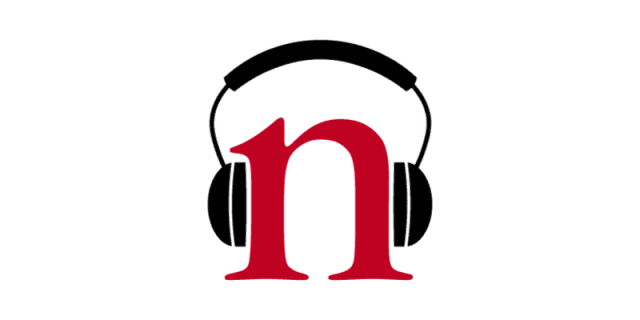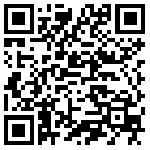科技工作者之家
科技工作者之家APP是专注科技人才,知识分享与人才交流的服务平台。
科技工作者之家 2019-07-28
来源:Nature自然科研

又到了每周一次的 Nature Podcast 时间了!欢迎收听本周由Benjamin Thompson和 Shamini Bundell 带来的一周科学故事,本期播客片段讨论了巴西博物馆的灾后重建。欢迎前往iTunes或你喜欢的其他播客平台下载完整版,随时随地收听一周科研新鲜事。

音频文本:
Host: Shamini Bundell
It’s been almost a year since a fire in Brazil’s National Museum destroyed one of the country’s largest and most valuable scientific collections. Countless precious artefacts were lost in the blaze and the lifework of dozens of researchers went up in flames. Reporter Anand Jagatia has been speaking to scientists affected by disasters like this one about their experiences and how they managed to rebuild their work after the dust settled.
Interviewer: Anand Jagatia
Paulo Buckup studies the evolution and diversity of fishes at the National Museum of Brazil in Rio de Janeiro, where he’s been a professor for the past 25 years.
Interviewee: Paulo Buckup
On the night of September 2nd, I was at home when I started to have news through the social networks that there was some smoke and fire in the museum, and the first thing I thought was I must get there and try to help as much as I can.
Interviewer: Anand Jagatia
When he heard that the museum was ablaze, he jumped into his car and drove straight to the scene.
Interviewee: Paulo Buckup
The fire went through the roof and was spreading to the adjacent hallways. It was a kind of very eerie, odd experience because it was night and the fire was just yellow, red, illuminating the sky with lots of sparks. Book pages were flying to the sky. The smell was the worst part. It was stuck to my skin and hair for several days and probably on my imagination for even longer because being there and what it meant made it even worse.
Interviewer: Anand Jagatia
Brazil’s National Museum is more than 200 years old and housed a collection of over 20 million objects, including mummies, animal specimens, fossils and archaeological artefacts. Several factors made that night particularly devastating. The floors of the old building were made of wood. It had no sprinkler system, and when the firefighters eventually arrived, they didn’t have any water because the hydrants were dry. Tens of thousands of the priceless items inside would eventually be consumed by the fire, but Paulo and his colleagues broke into the burning building through a closed entrance and tried to salvage whatever they could.
Interviewee: Paulo Buckup
We saved quite a bunch of molluscs, including specimens that are like the identity of described species, and the computers that had lots of data about the collections, some high-end equipment. But the most devastating thing was the impact on people that work in the museum, especially those scientists that used to work in that building.
Interviewer: Anand Jagatia
Some of those scientists lost their entire life’s work.
Interviewee: Paulo Buckup
Whole lives of collections amassed but it was even more than that, some of them lost their personal documents, documenting everything they’ve done. Even their diplomas were burnt there, and that’s a devastating experience for a researcher. I’d say that everybody I’ve seen here cried, from the doorman to the most tough scientist. Everybody cried at one moment or another. Some cried in front of the flames. Some cried several months later.
Interviewer: Anand Jagatia
Nobody when they begin their career as a scientist envisions having to deal with a disaster on such a scale. Catastrophes like this one are rare, but they do happen. Back in 2012, 4,000 miles away from Rio, Kathryn Moore was researching at NYU Medical School. She had an active lab of around 14 people who were studying cardiovascular disease and obesity in mice.
Interviewee: Kathryn Moore
In the midst of all this, we were hit by Hurricane Sandy. We lost power. There was also flooding of the building which resulted in the loss of the animal facility. Initially, we couldn’t enter the building to continue working and then once we could, we realised that we had lost a lot of our samples that were in the freezers and all of our mice, and this had a major impact on all of the projects that had been ongoing.
Interviewer: Anand Jagatia
When Kathryn and her colleagues were eventually allowed back into the lab, it wasn’t in a good way.
Interviewee: Kathryn Moore
Things were a mess. You could still smell the residual smell of diesel fuel that had come from the generators in the basement and there was a lot of clean up that had to be done, and that initially was good. It took our minds off of the fact that we had lost so many mice and ongoing experiments and samples and it was really after the first few days of busywork that it began to sink in that we were going to be facing a major uphill challenge. And so, several postdocs went to work in other labs of friends of mine or colleagues of mine that were generous and made offers to have people come and work there.
Interviewer: Anand Jagatia
Some of her students went to Massachusetts General Hospital, others to nearby Columbia University, so they could continue with their research. Similarly, in Brazil, some of the students at the museum were able to relocate to other institutions who offered their support during the crisis, and despite everything they had lost, the staff were able to get up and running in some capacity almost immediately.
Interviewee: Paulo Buckup
In less than a week, we were able to receive our colleagues so that they could have minimal conditions to continue to work and to restart the collections and research, and that was really important because we need to avoid a tragedy that would be even larger than the loss of the building and what was inside the building, and this tragedy would be the loss of the brainpower of our scientists.
Interviewer: Anand Jagatia
State representatives set up a fund to ensure the reconstruction of new buildings and Paulo says that they have received a lot of help in the wake of the tragedy, including generous donations of collections. But the hardest work is still to come, as the museum tries to painstakingly rebuild an inventory that once contained two centuries of science and culture which is now lost forever. In New York, almost seven years on from Hurricane Sandy, Kathryn reflects on how her lab managed to survive.
Interviewee: Kathryn Moore
I think I tried to focus on the silver linings. I like to think that Hurricane Sandy also provided us with an opportunity to change research directions. It made the team much stronger and more closely-knit and it also taught me about how I want to run my research group going forward.
Interviewer: Anand Jagatia
And back in Rio, Paulo says that nearly a year after the fire, things are going better than expected given the magnitude of the tragedy. The main immediate difficulty is the need for new buildings so that scientists can have a space to work and the new collections have a space to grow. But even so, there are reasons to be hopeful.
Interviewee: Paulo Buckup
Well, the main thing is the museum is alive – that is our motive since day one. We have our hashtag and everybody carries it in their heart, and in Portuguese it’s #museunacionalvive, and that translates, we’re still in business, we still keep our working capacity, we still have our staff, we still have lots of collections, we still have our main library, so I’m optimistic.
Host: Shamini Bundell
That was Paulo Buckup of Brazil’s National Museum and the Federal University of Rio de Janeiro. You also heard from Kathryn Moore of New York Medical School in the US. To read more about how Brazil’s National Museum is doing one year on, head over to nature.com/news. And if you want to make sure you’ve prepared your own lab for disaster, there’s an article over at nature.com/careers that you can check out.
ⓝ
Nature Podcast每周为您带来科学世界的全球新闻故事,覆盖众多科研领域,重点讲述Nature期刊上激动人心的研究故事。我们将话筒递给研究背后的科学家,呈现来自Nature记者和编辑的深度分析。在2017年,来自中国的收听和下载超过50万次,居全球第二。
↓↓iPhone用户长按二维码进入iTunes订阅

↓↓安卓用户长按二维码进入推荐平台acast订阅

点击“阅读原文”访问Nature官网收听完整版播客

来源:Nature-Research Nature自然科研
原文链接:http://mp.weixin.qq.com/s?__biz=MzAwNTAyMDY0MQ==&mid=2652562242&idx=2&sn=71959e7e959d3d53dd2b3993405e7179&chksm=80cd4dccb7bac4da59c3b8c4e64e4cd41f96d4860b6935675eee274592d28d4d34b39c4c336e&scene=27#wechat_redirect
版权声明:除非特别注明,本站所载内容来源于互联网、微信公众号等公开渠道,不代表本站观点,仅供参考、交流、公益传播之目的。转载的稿件版权归原作者或机构所有,如有侵权,请联系删除。
电话:(010)86409582
邮箱:kejie@scimall.org.cn